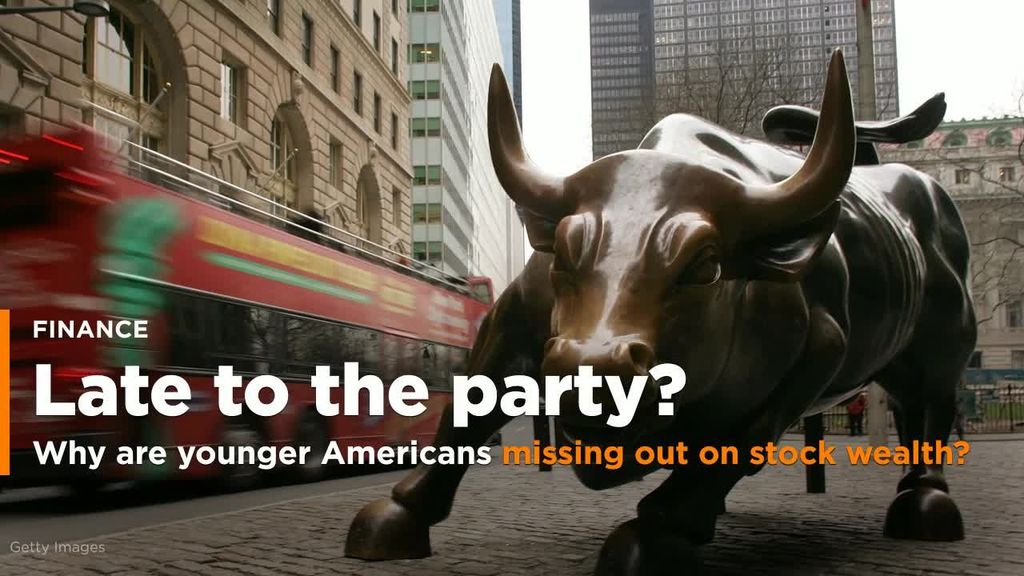U.S. stocks have more than tripled in value since 2009, but the bull market has left a lot of Americans behind. In almost every age group, the share of families owning equities—either directly or through funds and retirement accounts—declined from 2007 to 2016, according to the Federal Reserve’s most recent Survey of Consumer Finances. There’s one prominent exception: households headed by someone 75 or older.
Almost 49 percent of those households own stocks, up from 40 percent in 2007, just before the financial crisis, and about 35 percent in 2013, as many Americans were still recovering from the wreckage. It’s the highest number since the Fed began its triennial report on Americans and their money in 1989.
The top rate of stock ownership, 58 percent, is among families headed by people 55 to 64, just before traditional retirement age. Retired investors have historically been conservative. While stocks can provide larger returns over the long term, they’re prone to dramatic crashes—like the more than 50 percent drop in the 2007-09 bear market—and an octogenarian doesn’t have decades to wait for a rebound. Retirees often rely on their investments for income and emergency expenses. But the numbers suggest a generational change: Americans who have relied less on traditional pensions and more on 401(k)s and individual retirement accounts are aging into the 75-plus group.
Financial advisers say there’s also a particular reason some retirees are choosing stocks now. “There’s a lack of alternatives out there,” says Austin Frye, a financial planner at Frye Financial Center in Aventura, Fla. Yields on bonds are at near-record lows, while the most generous banks pay savers rates of barely 1 percent per year. As a result, dividend-paying stocks have become popular among seniors because they generate income.
Older investors don’t necessarily deserve their reputation for being cautious and risk-averse, says John Grable, a professor of financial planning at the University of Georgia who studies risk tolerance. They “often have more knowledge, experience, and a wider perspective than others,” he says. Almost all investors remember the tech bubble and the financial crisis. Seniors also remember the roaring bull markets of the ’80s and ’90s. Frye says his older clients are “very comfortable with stocks because they’ve been investing in them for a lifetime.”
The elderly have also had more time to build up a nest egg, giving some of them “the financial resources to withstand a potential loss,” Grable says. The wealth gap between the oldest and youngest Americans widened to the largest on record in 2016, with the typical household headed by someone 75 or older boasting a net worth more than 24 times that of one headed by a person under 35.
Why are younger Americans less likely to own stocks today than in 2007? Part of the blame may go to the lingering trauma of the financial crisis. But workers have also faced a sluggish pace of wage growth throughout the economic recovery. That, combined with record levels ofstudent debt, has made it difficult for young households to save and invest at all. While median wealth for the oldest cohort of Americans is up 7 percent from 2007, it’s down 20 percent for the youngest, after adjusting for inflation.
As a group, the oldest Americans now have an unprecedented amount of wealth, which many are eager to pass on to future generations of their families. If a retiree’s goal is passing on an inheritance or giving to charity, taking risks in the stock market may be appropriate. For many seniors, however, leaving a legacy ought to be a secondary goal to providing for their own livelihood, says Allan Roth, a financial planner at Wealth Logic LLC in Colorado Springs. And he warns that too many older Americans are placing a dangerous bet by loading up on stocks. “It’s a very risky world,” says Roth. At some point, “markets are going to plunge,” he says, and there’s no guarantee that they’ll recover as quickly as they did after the last two crashes.

